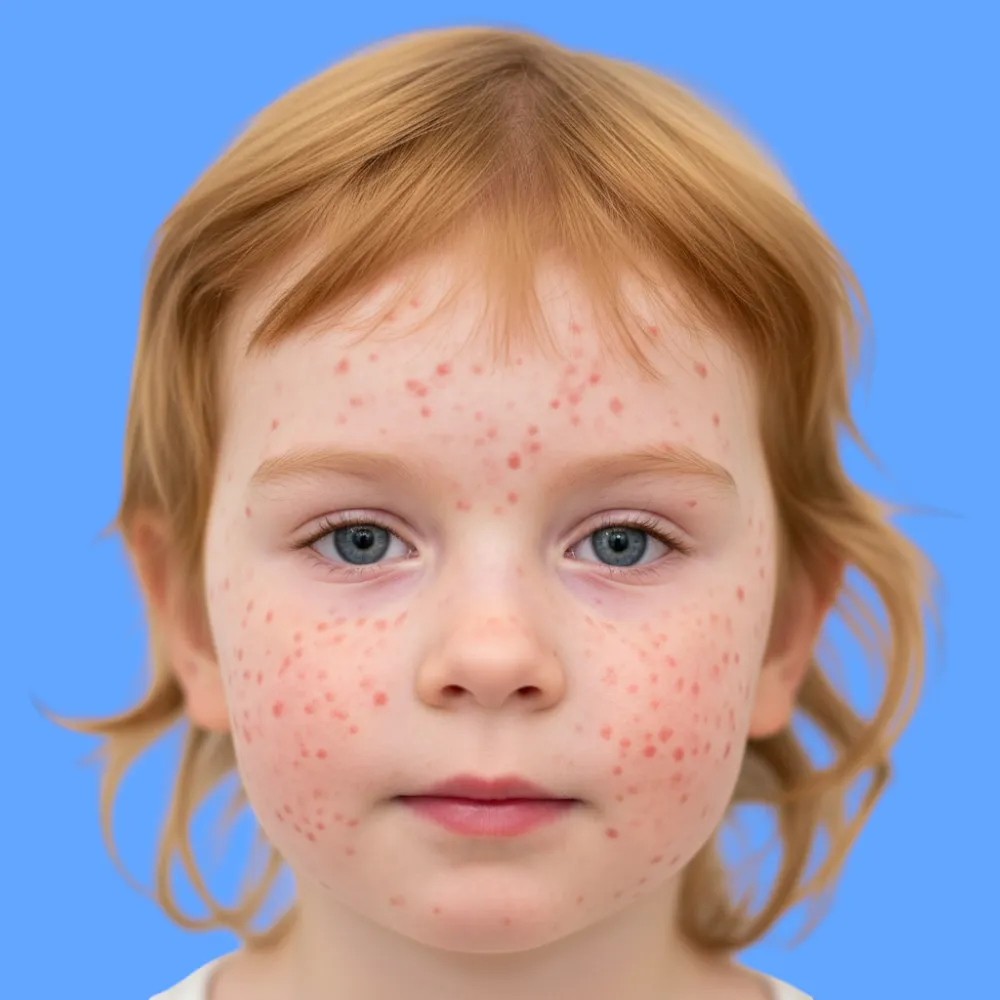What is rubella?
Rubella is considered a mild viral infection that affects children and adults and usually appears as a pink rash and mild fever.
In most cases, it passes without complications, but the greatest risk occurs when pregnant women are infected because it can lead to serious birth defects in the fetus.
Causes of rubella infection
The most common causes of rubella include:
- Transmission through droplets from coughing or sneezing.
- Close contact with an infected person in enclosed spaces for a long time.
- Weak immune system in some individuals.
- Not receiving essential childhood vaccinations.
- Traveling to areas where the disease is prevalent.
- Sharing personal items with infected individuals.
Symptoms of rubella

There are several common symptoms that patients may experience, including:
- Mild increase in body temperature.
- Persistent mild headache.
- Nasal congestion or runny nose.
- Red eyes with itching sensation.
- Swollen lymph nodes behind the ears and neck.
- Pink rash starting on the face and spreading to the body.
- Joint pain, especially in women.
How is rubella diagnosed?
Rubella is usually diagnosed through a physical examination and observation of the rash, but confirmation is done by a blood test to detect antibodies specific to the virus, which helps determine whether the infection is recent or past.
Treatment of rubella
There are several ways to treat rubella, including:
- Complete rest at home to reduce fatigue.
- Taking pain relievers and fever reducers available without prescription.
- Drinking plenty of fluids to prevent dehydration.
- Avoiding contact, especially with pregnant women.
- Using cold compresses to relieve fever.
- Supporting immunity with a healthy diet.
When should you see a doctor?
It is advised to seek medical attention immediately if any of the following occur:
- Fever lasting more than three days.
- Unusual or worsening rash.
- Difficulty breathing or facial swelling.
- Severe joint pain that does not improve.
- Suspected pregnancy with similar symptoms.
- Significant loss of appetite or persistent vomiting.
Tips for preventing infection
The most recommended prevention methods include:
- Receiving essential childhood vaccinations.
- Reviewing vaccination records before pregnancy.
- Washing hands regularly with soap and water.
- Avoiding contact with infected individuals.
- Wearing a mask in crowded places.
- Boosting immunity by eating a balanced diet.
Frequently Asked Questions
How does rubella spread?
Through droplets from coughing or sneezing.
What is the incubation period for rubella?
It ranges between two and three weeks.
Is there a vaccine for rubella?
Yes, as part of the combined MMR vaccine.
Can you get rubella twice?
Rarely, after gaining immunity or vaccination.
Article Summary
Rubella is a mild viral infection that affects children and adults but poses a serious risk during pregnancy, Its symptoms include rash and mild fever.
Diagnosis is usually confirmed by a blood test, and vaccination is the best way to prevent complications.